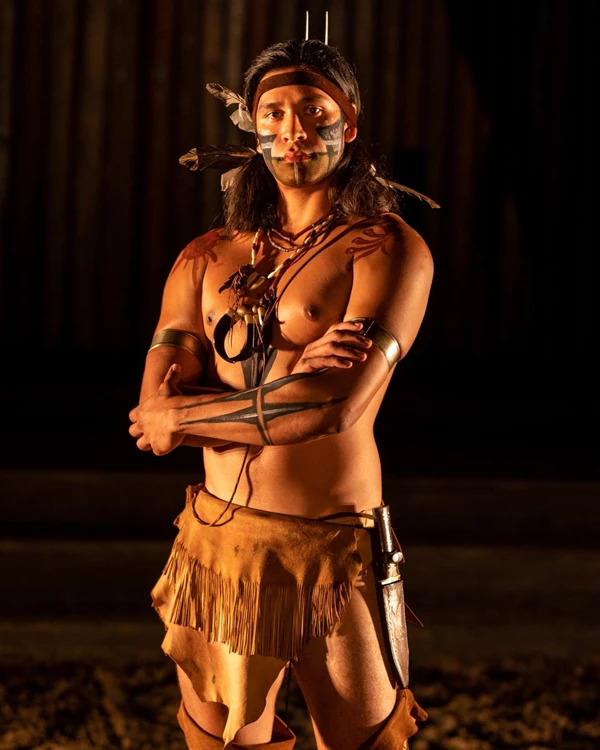Last updated: August 15, 2025
Person
Wanchese

Roanoke Island Historical Association, The Lost Colony
Wanchese, a Roanoke member of the Carolina Algonquian, became one of the first Native Americans to travel to Europe during the English colonization of Roanoke Island. Wanchese, as opposed to Manteo, who befriended the English, found the English to be dangerous and a threat to his home and people in the Outer Banks of North Carolina. He also became a scapegoat, receiving much of the blame for the failure of the "Lost Colony" at Roanoke Island.
Wanchese was born sometime in the 1500s as a member of the Roanoke tribe, part of the Carolina Algonquian people who lived in Ossomocomuck, now called the Outer Banks.
In 1584, when the first English voyage to explore the Outer Banks arrived, Wanchese was likely not present at these first interactions. After they spent six weeks with the Algonquian people, the English, led by Philip Amadas and Arthur Barlowe, prepared to return to England. Wingina selected two Algonquian men, Manteo and Wanchese, to accompany the English on their voyage home. Wingina likely thought it would be advantageous to have two of his people with the English to learn how the English people lived. On the long voyage from their home to England, both Algonquian men began to learn English.
The ship transporting Manteo and Wanchese to England arrived in mid-September, and he traveled with the Englishmen to London to meet Sir Walter Raleigh. Raleigh hosted Manteo and Wanchese at his home, Durham House, where they learned to speak English with Thomas Hariot and also began to teach him their Algonquian culture. Working with Manteo, Hariot was able to create a rudimentary Algonquian alphabet.
In October of 1584, Sir Walter Raleigh invited other European visitors to meet Manteo and Wanchese, using them as a display. By the end of 1584, Wanchese learned enough English to be able to serve as an interpreter for the upcoming English voyages returning to Roanoke Island.
In the spring of 1585, Manteo and Wanchese moved to Plymouth, joining English sailors preparing to set sail to return to Ossomocomuck. Departing on April 9th, 1585, Wanchese was aboard the Tyger with Manteo, Thomas Hariot, and artist John White. The fleet headed west to Puerto Rico before going north along the North American coast to Ossomocomuck.
When they arrived in July, disaster struck. Due to a series of storms and poor navigational choices, the Tyger was severely damaged and most of her supplies ruined. The English were now reliant on the Carolina Algonquian for help. By August, Wanchese had left the English and returned to his people, refusing to see the English when they asked for him. He urged Wingina not to trust the English, sowing distrust amongst the Algonquian people. Wingina listened to Wanchese, but continued to work with the English against his advice.
Since he did not spend much time with the English after he returned to his home, little is known about Wanchese until the end of spring in 1586. After their relationship deteriorated, Ralph Lane led against Wingina, now called Pemisapam, at the village of Dasemunkepeuc at the beginning of June 1586. While Pemisapam was killed, Wanchese survived the attack.
Wanchese is not heard of again until 1587 when the final English voyage landed just off the shores of Roanoke Island. While it is not confirmed, it is suspected that Wanchese was one of the Carolina Algonquian involved in the murder of George Howe. John White's departure from the Outer Banks marks the last known English report about Wanchese and his life in Ossomocomuck.
All we know about Wanchese comes from the English perspective. Whether he was a willing member of the 1584 voyage to England who grew distrustful or a captive desperately trying to get home to his people, we will never know. What we do know is that his story is similar to that of other Carolina Algonquian affected by English Colonization.
